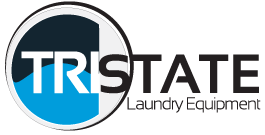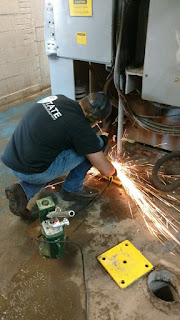While boiler skids are common for industrial projects, they are uncommon for dry cleaning and laundry facilities because most equipment sellers either don’t have the knowledge of skidding or don’t have the equipment or facility to fabricate.
Tri-State’s first boiler skid project was for Mega Yacht Cleaners in Ft. Lauderdale, Florida. The customer approached us having just recently built a new facility, wanting a
Parker Boiler, and understanding the value of getting the boiler into his facility ready to connect to utilities. He also understood the importance of having a properly piped, up-to-code, complete package designed specifically for his business.
When the unit arrived, the customer called me to say he “couldn’t believe what he was seeing being unloaded at his location.” He thanked me profusely and went on to say that “it was beautiful.” I had a fellow distributor drop by his location shortly after the installation, and he said the first thing the owner did, acting like a proud father, was take him to the boiler room and show him the skidded Parker Boiler System.
When most dry cleaners consider pricing for the boiler and other needed components, they typically don’t have any idea how much time and expense goes into rigging and piping the equipment. Plus, there is the risk that it could be done incorrectly or worse, on the cheap. Tri-State charges around $7,000 for skidding up a 15-25 H.P. boiler, return, blow down, chemical feed, and softener system. This is an incredibly fair price given the extensive knowledge of skid design and equipment placement, welding, steel cutting, tools, and time required to do the job.
Once the customer receives the skid, all that is required is the gas vent stack out, steam supply header connection to the boiler, return header connection to the return system, blow down vented through the roof, drain to their floor drain, electrical hit to the boiler (the return system is already wired into the boiler by Tri-State), and a city water hit to the return system. Then they are ready to go; this is a big-time saver for an install job.
If you are interested in learning more about boiler skid options for your
dry cleaning or
laundry operation, please give us a call at 1-866-885-5218.


















